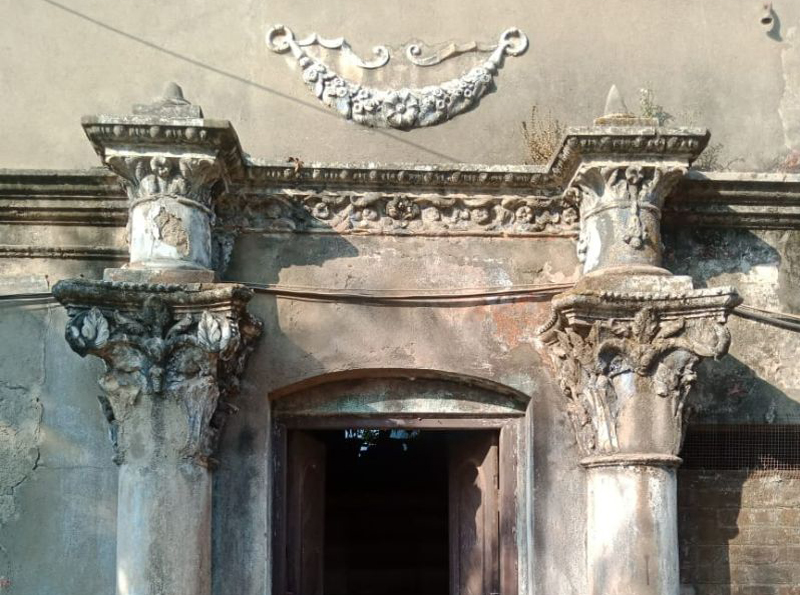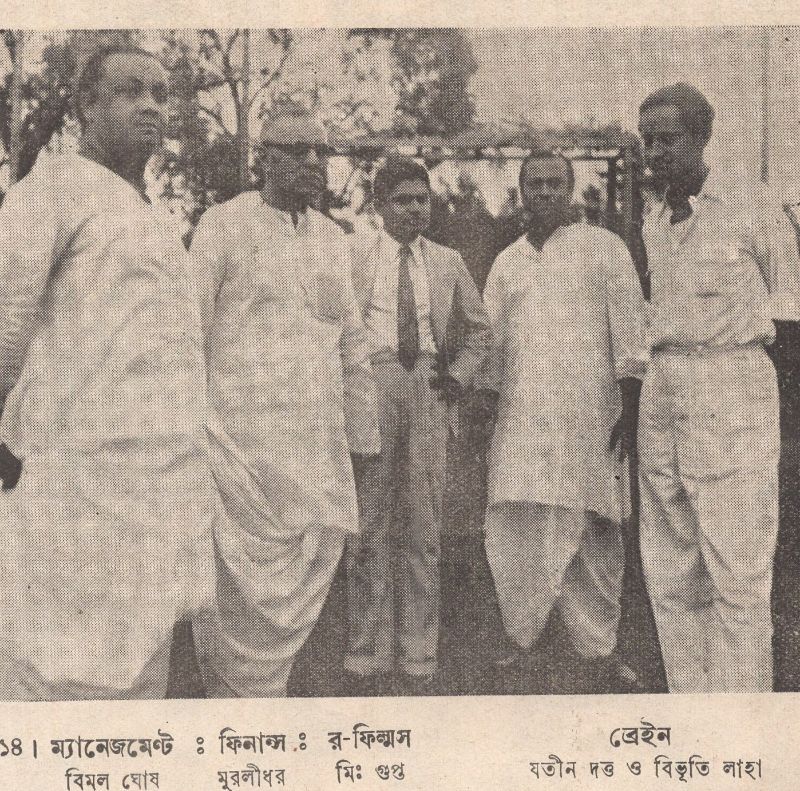
National Sound Studio
Address: Sinthee
Years Active: 1939-1961?
First Film: Stree
Language: Bengali
Director: Satu Sen
Released on: 21.03.40 at Uttara
A studio called Film Producers was inaugurated on a plot of land adjacent to the Sinthee crossing on July 31, 1939. Muralidhar Chattopadhyay, Umanath Gangopadhyay, Makhanlal Mallick and Ramgati Hazra were in charge of helming the affairs. Muralidhar already used to run a distribution unit called Riten Sound and production house called Kamala Talkies. It was Kamala Talkies that took this new studio on rent. Kamala Talkies’ first film — Rajagi (1937) — was shot in a different studio, i.e. Kali Films. It was therefore time to shoot films at their own studio. Satu Sen’s Swami Stree (1940) was shot here. The second film was Rajkumar’s Nirbashan (1940). Kamala Talkies, however, was short-lived. Muralidhar soon established MP Productions. He was no longer associated with Film Producers. Movies of other banners like Shuktara (1940), E Par O Par (1941), Pashan Debata (1942) were shot at Film Producers.The ownership of the studio changed hands soon after. Film Producers came to be known as National Sound Studio. Mangal Chakraborty and Pannalal Pathak became its new managing directors. Bish Bachhar Aage (1948), Chalaar Pathe (1948), Mayer Dak (1948), Padma Pramatta Nadi (1948) were shot there. But even this arrangement did not continue for long. The studio’s ownership again returned to Muralidhar. MP Productions took charge of running the National Sound Studio. The industry used to refer to it as the MP Studio at the Sinthee crossing.The most successful phase of National Sound Studio was during its association with MP. Director Bibhuti Lada, cinematographer Bijoy Ghosh, sound recordists Jatin Dutta, Jagannath Chattopadhyay and Anil Talukdar, editor Kali Raha and art directors Satyen Roy Chowdhuryand Sudhir Khan joined in. Its manager was Bimal Ghosh.The first film in this phase was Sukumar Dasgupta’s Abhijatya (1949). Then came Agradoot’s Sankalpa (1949). That meant all MP Productions were shot at the National Sound Studio. Vidyasagar (1950) and Babla (1952) had Hindi versions too. Films made by other banners were shot here too. Films made by Agradoot and Agragami in their first phase were all shot here.Most importantly, Uttam Kumar’s first hit was shot here. This studio also gifted the Bengali viewers their first hit Uttam-Suchitra film. Basu Paribar and Sare Chuyattor were both shot here. The saddest part is that even though it was a part of the beginning of the Uttam-Suchitra juggernaut, the studio soon ran out of luck. The era of MP Studios ended by early 1960s.National Sound Studio still exists on pen and paper. Some relics of the studio still remain at Sinthee. There is a discarded pond. One house of the studio floor and another house still remain. This was once the main office of MP Studio. A few scenes of Basu Paribar were shot there. Today, there stands one residential building, a few factories and warehouses on the erstwhile studio premises. One wonders if it is possible to stand at the busy Sinthee crossing and imagine that a stone’s throw away was the studio where hits like Agniparikha, Sagarika and Suryatoran were shot?
Selected Bengali Filmography
Movies shot at Film Producers Studio:
Swami Stree (1940), Rajkumarer Nirbasan (1940), Shuktara
(1940), Epar Opar (1941), Pashan Debata (1942).
Films shot at MP National Sound Studio:
Bish Bachhar Aage (1948), Chalaar Pathe (1948), Mayer Dak
(1948), Padma Pramatta Nadi (1948).
Films shot at MP Studio:
Abhijatya (1949), Sankalpa (1949), Sandipan Pathsala
(1949), Vidyasagar (1950), Babla (1950), Sahajatri (1951),
Basu Paribar (1952), Kar Pape (1952), Sanjibani (1952), Sare
Chuattar (1953), Agnipariksha (1954), Debi Malini (1955),
Sabar Upare (1955), Ekti Raat (1956), Sagarika (1956), Trijama (1956),
Pathe Holo Deri (1957), Dakharkara (1958), Suryatoran (1958), Headmaster
(1959), Kichhukshan (1959), Lalu Bhulu (1959), Kuhak
(1960), Khokababur Pratyabartan (1960), Aaj Kal Parshu (1961).
Did You Know?
“Rs 400 per month in the first year. Rs 600 per month in the second year and Rs 700 per month in the third year. Will this rate work?” Bimal Ghosh had asked Santosh Sinha. “I think it will work if we touch up and polish a little here and there” — pat came the reply.Santosh was in charge of imparting acting lessons to new actors. Bimal was the studio manager. Their conversation centered around a new actor. He had already given three-four flops. MP had still wanted to work with him. The production house signed a three-year contract with the new entrant on Santosh’s assurance. His words that “a touch up and polish here and there” paved the entry of Tollywood’s Mahanayak, Uttam Kumar.




